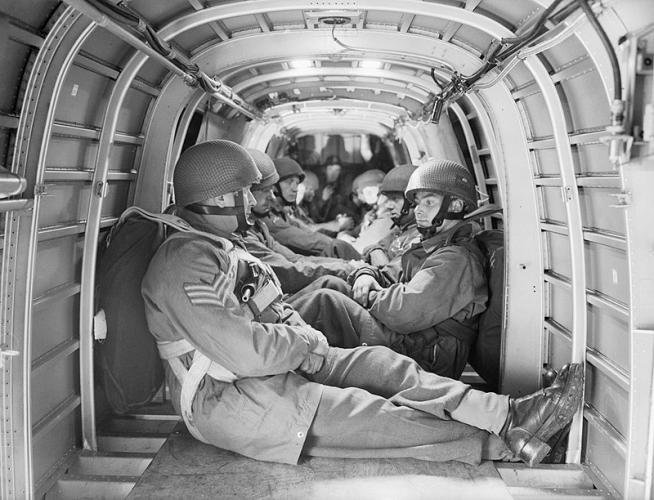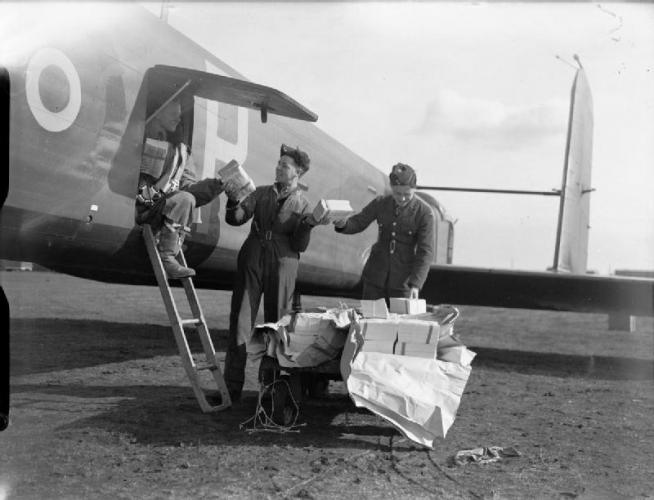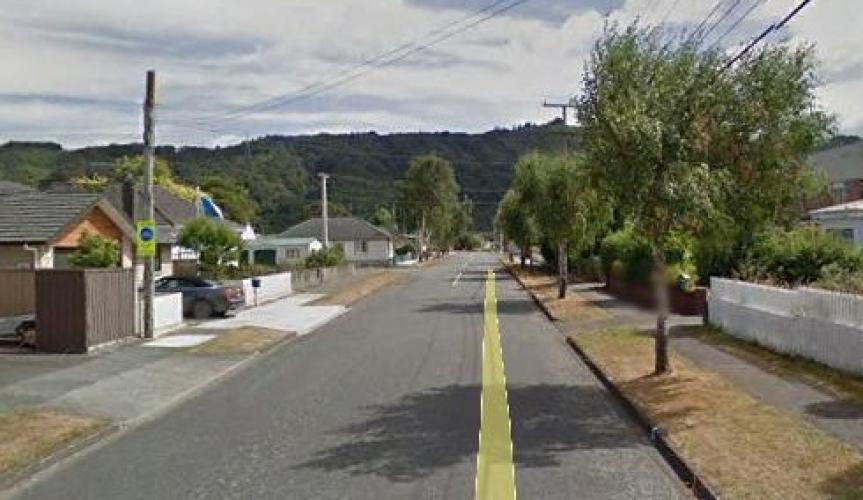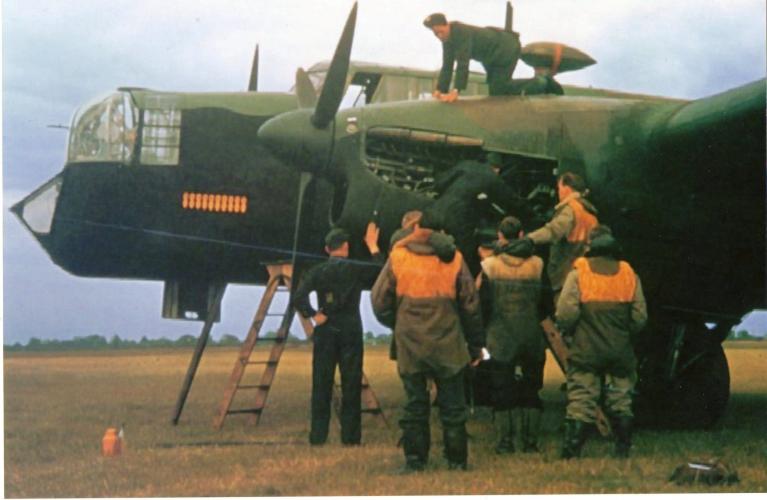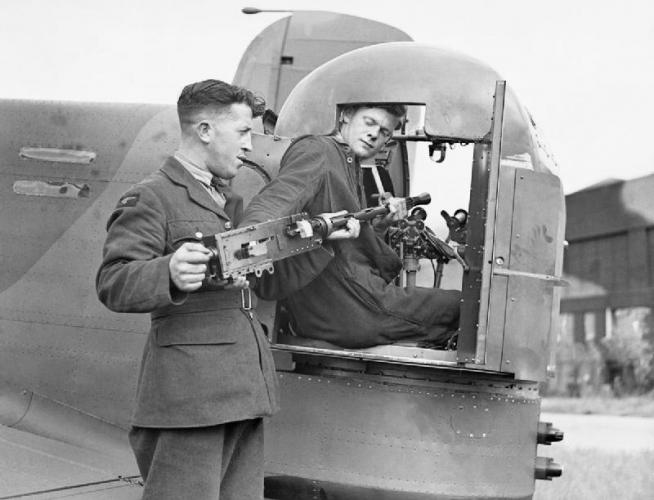131 Whitley Ave Upper Hutt, street scene 2018
Reason for the name
Whitley Avenue is one of four streets created as part of a 1949 subdivision whose names memorialised aircraft New Zealanders had served in during World War 2.
Whitley Avenue is in the suburb of Ebdentown in Upper Hutt a residential suburb situated towards the Hutt river. The Armstrong Whitworth A.W.38 Whitley was one of three British twin-engined, front line medium bomber types that were in service with the Royal Air Force at the outbreak of the Second World War. Alongside the Vickers Wellington and the Handley Page Hampden, the Whitley was developed during the mid-1930s according to Air Ministry Specification B.3/34, which it was subsequently selected to meet. It was an aircraft used by the RNZAF to train New Zealand aircrew during the Second World War.
Author: The Poppy Places Trust
The Armstrong Whitworth A.W.38 Whitley was one of three British twin-engined, front line medium bomber types that were in service with the Royal Air Force (RAF) at the outbreak of WW2. Alongside the Vickers Wellington and the Handley Page Hampden, the Whitley was developed during the mid-1930s according to Air Ministry Specificatiion B.3/34, which it was subsequently selected to meet. In 1937, the Whitley formally entered into RAF squadron service; it was the first of the three medium bombers to be introduced.
Following the outbreak of war in September 1939, the Whitley participated in the first RAF bombing raid upon German territory and remained an integral part of the early British bomber offensive. By 1943, it was being superseded as a bomber by the larger four-engined "heavies" such as the Avro Lancaster. Its front line service included maritime reconnaissance with Coastal Command and the second line roles of glider-tug, trainer and transport aircraft. The type was also procured by British Overseas Airways Corporation (BOAC) as a civilian freighter aircraft. The aircraft was named after Whitley, a suburb of Coventry, home of one of Armstrong Whitworth's plants.
In July 1934, the Air Ministry issued Specification B.3/34, seeking a heavy night bomber/troop transport to replace the Handley Page Heyford biplane bomber. John Lloyd, the Chief Designer of Armstrong Whitworth Aircraft, chose to respond to the specification with a design designated as the AW.38, which later was given the name Whitley after the location of Armstrong Whitworth's main factory. The design of the AW.38 was in fact a development of the Armstrong Whitworth AW.23 bomber-transport design that had lost to the Bristol Bombay for the earlier Specification C.26/31.
Lloyd selected the Armstrong Siddeley Tiger IX radial engine to power the Whitley, which was capable of generating 795 horsepower. One of the more innovative features of the Whitley's design was the adoption of a three-bladed two-position variable pitch propeller built by De Havilland; the Whitley was the first aircraft to fly with such an arrangement. As Lloyd was unfamiliar with the use of flaps on a large heavy monoplane, they were initially omitted from the design. To compensate, the mid-set wings were set at a high angle of incidence (8.5°) to confer good take-off and landing performance. Although flaps were included late in the design stage, the wing remained unaltered; as a result, the Whitley flew with a pronounced nose-down attitude when flown with the wings in the cruising position, resulting in considerable drag.
The Whitley holds the distinction of having been the first aircraft to serve with the RAF to utilise a semi-monocoque fuselage, which was built using a slab-sided structure to ease production. This replaced the traditional tubular construction method previously employed by Armstrong Whitworth, instead constructing the airframe from light-alloy rolled sections, pressings, and corrugated sheets. According to aviation author Philip Moyes, the decision to adopt the semi-monocoque fuselage design was a significant step forwards, and the integrity of which was well-proven during subsequent RAF service, having survived multiple instances of severe damage being sustained.
On June 1935, owing to the urgent need to replace biplane heavy bombers then in service with the RAF, a verbal agreement was formed to produce an initial 80 aircraft, 40 being of an early Whitley Mk I standard and the other 40 being a more advanced Whitley Mk II standard. Production was initially at three factories in Coventry; fuselages and detailed components were fabricated at Whitley Abbey, panel-beating and much of the detailed work occurred at the former Coventry Ordnance Works facility, while wing fabrication and final assembly took placed at Baginton Aerodrome. During 1935 and 1936, various contracts were placed for the type; the Whitley was ordered "off the drawing board" - prior to the first flights of any of the prototypes.
On 17 March 1936, the first prototype Whitley Mk I, K4586, conducted its maiden flight from Baginton Aerodrome, piloted by Armstrong Whitworth Chief Test Pilot Alan Campbell-Orde. K4586 was powered by a pair of 795 hp (593 kW) Tiger IX engines. The second prototype, K4587, was furnished with a pair of more powerful medium-supercharged Tiger XI engines. The prototypes differed little from the initial production standard aircraft; a total of 34 production Whitley Mk I were completed.
Military Service
On 9 March 1937, the Whitley Mk I began entering squadron service with No10 Sqn of the RAF, replacing their Handley Page Heyford biplanes. In January 1938, the Whitley Mk II first entered squadron service with No58 Sqn and in August 1938, the Whitley Mk III first entered service with No51 Sqn. In May 1939, the Whitley Mk IV first entered service with No. 10 Squadron and in August 1939, the Whitley Mk IVA first entered service with No78 Sqn. By the outbreak of the Second World War, a total of seven squadrons were operational, the majority of these flying Whitley III or IV aircraft, while the Whitley V had only just been introduced to service; a total of 196 Whitleys were on charge with the RAF.
At the start of the war, No4 Group, equipped with the Whitley, held the distinction of being the only trained night bomber force in the world. Alongside the Handley Page Hampden and the Vickers Wellington, the Whitley bore the brunt of the early fighting and saw action during the first night of the war, when they dropped propaganda leaflets over Germany. The propaganda flight made the Whitley the first aircraft ofRAF Bomber Command to penetrate into Germany. Further propaganda flights would travel as far as Berlin, Prague, and Warsaw. On the night of 19/20 March 1940, in conjunction with multiple Hampdens, the Whitley conducted the first bombing raid on German soil, attacking the Hornum Seaplane base on the Island of Sylt.. Following the Hörnum raid, Whitleys routinely patrolled the Frisian Islands, targeting shipping and seaplane activity.
On the night of 11/12 June 1940, the Whitley carried out Operstion Haddock, the first RAF bombing raid on Italy, only a few hours after Italy's declaration of war; the Whitleys bombed turin and Genoa reaching Northern Italy via a refuelling stop in the Channel Islands. Many leading World War II bomber pilots of the RAF flew Whitleys at some point in their career, including Don Bennett, James Brian Tait and Leonard Cheshire.
Unlike the Hampden and Wellington, which had met Specification B.9/32 for a day bomber, the Whitley was always intended for night operations alone and thus escaped the early heavy losses received during daylight raids carried out upon German shipping. As the oldest of the three bombers, the Whitley was effectively obsolete by the start of the war, yet over 1,000 more aircraft were produced before a suitable replacement was found. A particular problem with the twin-engine aircraft was that it could not maintain altitude on one engine. Whitleys flew a total of 8,996 operations with Bomber Command, dropped 9,845 tons (8,931 tonnes) of bombs, and 269 aircraft were lost in action
On the night of 29/30 April 1942 No. 58 Squadron flying Whitleys bombed the Port of Ostend in Belgium. This was the last operational mission by a Whitley equipped bomber squadron. In late 1942, the Whitley was retired from service as a frontline aircraft for bomber squadrons and was shifted to other roles. The type continued to operate delivering supplies and agents in the Special Duties squadrons (138 and 161) until December 1942, as well as serving as a transport for troops and freight, a carrier for paratroopers and a tow aircraft for gliders. In 1940, the Whitley had been selected as the standard paratroop transport; in this role, the ventral turret aperture was commonly modified to be used for the egress of paratroopers. No100 Group RAF used Whitleys as an airborne platform to carry airborne radar and electronic counter measures. In February 1942, Whitleys were used to carry the paratroopers who participated in the Bruneval raid, code named Operation Biting, in which German radar technology was captured from a German base on the coast of France.
Long-range Coastal Command Mk VII variants, were among the last Whitleys remaining in front-line service, remaining in service until early 1943. The first U Boat kill attributed to the Whitley Mk VII was the sinking of the German submarine U751 on 17 July 1942, which was achieved in combination with a Lancaster heavy bomber. Having evaluated the Whitley in 1942, the Fleet Air Arm operated a number of modified ex-RAF Mk VIIs from 1944 to 1946, to train aircrew in Merlin engine management and fuel transfer procedures.
Civilian Service
In April/May 1942, the BOAC operated 15 Whitley Mk V aircraft which had been converted into freighters. The conversion process involved the removal of all armaments, the turret recesses were faired over, additional fuel tanks were installed in the bomb bay, the interior of the fuselage was adapted for freight stowage, and at least one aircraft was fitted with an enlarged cargo door. The type was typically used for night supply flights from Gibraltar to Malta; the route took seven hours, and would often require landing during Axis air attacks on the island. Whitley freighters also flew the dangerous route between Leuchars Station, Scotland and Stockholm Sweden. The Whitley consumed a proportionally large quantity of fuel to carry a relatively small payload, and there were various other reasons making the type less than ideal, so in August 1942 the type was replaced by the Lockheed Hudson and the 14 survivors were returned to the RAF.

